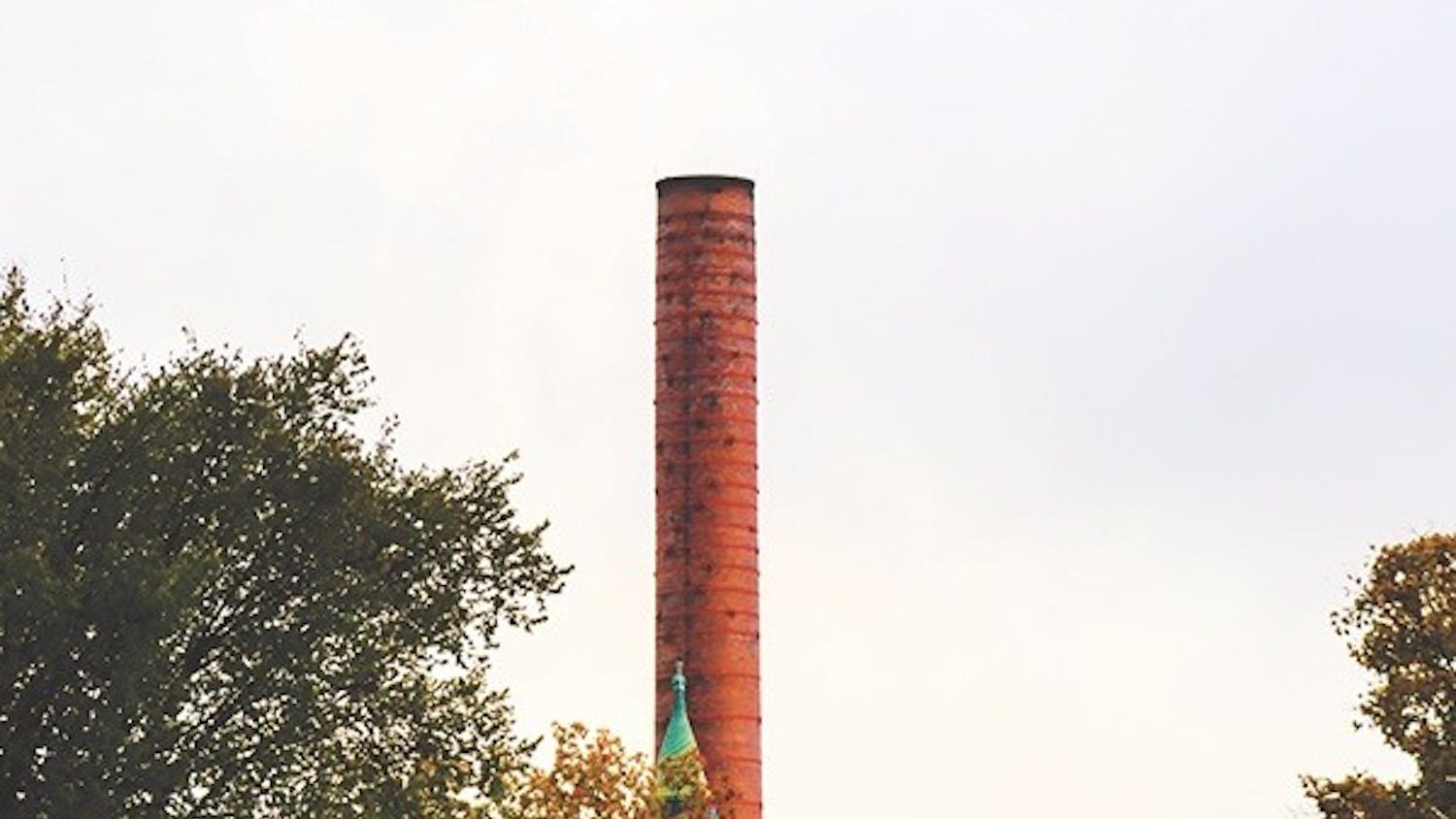On the evening of April 22, a panel convened in Filene Auditorium to discuss Dartmouth’s sustainability progress. The meeting, held on Earth Day, marked two years since the publication of the “Our Green Future: The Sustainability Road Map for Dartmouth” report — the result of a task force created by College President Phil Hanlon to make Dartmouth a “leader” in sustainability.
Following an introduction from Hanlon, in which he argued that the College can help form solutions to sustainability challenges, the panel began its formal presentation on Dartmouth’s progress with “Our Green Future.” The panel included vice president for institutional projects Joshua Keniston, sustainability assistant director Jenna Musco ’11 and director of sustainability Rosalie Kerr ’97. They addressed the College’s sustainability impact through the categories outlined in the report: energy, food, landscape, transportation, waste and water. According to the Dartmouth College Waste Report published in 2018, the College hit its peak waste production in 2016 with 3,885 tons. Since then, waste production has decreased, but not enough, according to Musco.
“We produce about 3,500 tons of waste on campus,” Musco said. “Looking at our goals to date, you’ll notice we’re not achieving our goals.”
Musco also discussed the decrease in Dartmouth’s diversion rate — the proportion of waste diverted from the landfill into sustainable waste facilities, such as recycling plants. Musco said that the diversion rate peaked in 2015 at 48 percent, and the report set a goal of 50 percent for 2019. However, she added that the diversion rate has remained around 32 percent over the past two years.
In an interview following the forum, Hanlon expressed his opinions about waste sustainability at Dartmouth.
“I’m really proud of the progress, because a lot of people put a lot of effort into it, and that includes students as well as many of our staff and faculty experts,” Hanlon said. “I think that there clearly are areas where we’re not hitting our objectives — waste being one of them.”
After discussing waste, the panel detailed the College’s food and water consumption. Musco said Dartmouth spends about $8 million on food annually and serves about 13,000 meals daily. She added that as part of Our Green Future, Dartmouth Dining Services is encouraging students to choose more sustainable food options. Furthermore, Musco said that the dining halls have also had a large impact on water consumption.
“When we renovated [the Class of ’53 Commons], it produced a significant decrease in our water consumption,” Kerr said.
Kerr also acknowledged the lack of progress that the College has made in regards to sustainable transportation and landscape upkeep. Kerr said that while College had participated in town efforts designed to control invasive species in the area, Dartmouth had not focused much on sustainable transportation.
The majority of the forum focused on the sixth and final topic, energy, which Kerr said the College devotes most of its efforts and has more explicit goals.
During the forum, Kerr explained how Dartmouth currently produces energy. The College’s existing heating plant, which has been used since 1898, burns No. 6 fuel oil to produce steam. This steam runs through turbines to generate energy and also provides heat to nearly every building on campus. This system is approximately 55 to 65 percent efficient, Kerr said.
The panel presented the proposal to transition the College to a hot water heating system powered by a biomass plant, which will cost around $200 million. Keniston highlighted the importance of this transition.
“The headline to me is the hot water conversion — the work we’re going to do to transform all of our buildings, to transform all of the pipes that are in the grounds,” Keniston said. “That’s where we get a 20 percent increase in our overall efficiency.”
Kerr also discussed the construction that the project requires.
“Transitioning to hot water will mean we have to transition buildings to hot water,” Kerr said. “That means we’re going to have to do a lot of construction. It’s going to be the kind of construction that you’ll notice, where we’re in buildings having to replace heating systems.”
Beyond the sustainability progress, Kerr explained how the hot water system could improve residential life for students.
“It’s also going to mean the ‘Moaning Myrtle’ sounds that happen in the dorms with the steam system will stop,” Kerr said.
After hearing the panel discuss both the progress and stagnation of “Our Green Future,” some of the audience members said they appreciated the acknowledgment that there are areas in sustainability that require more attention.
“It’s a dual view into the progress that has been made,” Maria Smith-Lopez ’21 said. “They also very heavily emphasize that there is still a lot more progress that needs to be done, and they’re very aware of the areas that they’re weakest in and the kinds of progress they need to make.”
Katherine Salamido ’19 expressed her optimism that sustainability will eventually become ingrained in Dartmouth’s student culture.
“I think that sustainability is more and more emerging as something that the student body values and connects with,” Salamido said. “I see sustainability being knit into the essential, core story of what Dartmouth is as an institution as a huge opportunity and path forward.”


